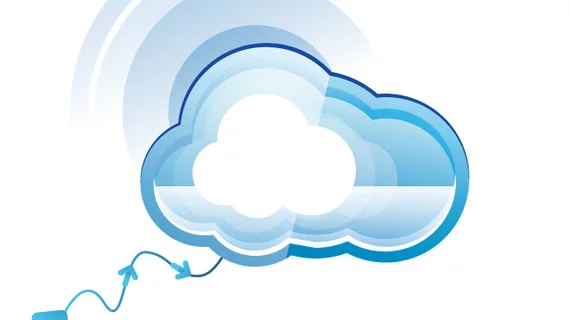As image exchange transitions to the cloud, PACS peripherals such as CD burners are incorporating this innovation into their designs. Given the changing tides of medical imaging informatics, how are healthcare institutions across the nation making their burners do more?
Up in the cloud
The cloud brings a contemporary way to share and save information electronically, essentially eliminating the need for trading tangible forms of content. When applying this technology to the realm of radiology, it’s clear that numerous opportunities are available for the betterment of image exchange. Many vendors are incorporating the feature into their pre-existing products, in many ways progressing CD burning to another level.
Kaiser Permanente in Oakland, Calif., is one organization that has made the jump, utilizing a burner integrated with a digital image exchange strategy that can import, burn, and upload data to the cloud. “The image exchange functionality works well for us because we can use it on top of our existing burner, in turn leveraging the platforms that we already had,” says Skip Kennedy, MSc, CIIP, technical director of imaging informatics at Kaiser Permanente.
“From the point of view of the file room, this process becomes relatively transparent; it’s what they’ve been doing all along but with new buttons. Thousands of people interact with the system, so it would normally be a challenge to implement a new one because it would require a lot of training. However, that was a small challenge with our image exchange project,” he says.
In addition to ease of adjustment, adoption of cloud capability in CD burning has proven beneficial in other areas. “We’ve entered into an approved world where we can now securely send DICOM data from our PACS, routed through our burner, to joining hospitals with HIPAA compliant software,” explains Michael McLaughlin, imaging informatics manager at The Ohio State University Wexner Medical Center in Columbus.
“We’ve just gotten to the point where we can examine cost savings,” McLaughlin says. “In general, we’re starting to observe savings across the board. It takes some time to see return on these types of investments, and we still need to promote connections with local clinics and hospitals.”
Sending images through the cloud eliminates shipping CDs locally and internationally, which also cuts down on costs. It also has improved turnaround time since institutions no longer need to wait for disk delivery by mail or courier. On the other hand, adoption of CD burners with cloud capabilities does not come without its challenges. This technology is an expense, especially for smaller clinics that have yet to invest in a high-volume medical CD burner. Staffing also could be an issue, as well as continued patient requests for disks.
Lori Van Amberg, BS, RT, CIIP, PACS administrator at the City of Hope in Duarte, Calif., is exploring the option of a cloud-enabled CD burner at the City of Hope and says she is excited to move in that direction. “This is where the trend is and we like to be on the forefront of new technology,” she states.
However, universal adoption of cloud exchange in radiology seems unlikely. “The idea of receiving outside images or sending and receiving images from patients and physicians [through the cloud] is really appealing, but I don’t think people are going to stop sending CDs. Rather, I think it will just be another avenue of transaction,” explains Van Amberg.
Kennedy echoes Van Amberg’s th-oughts, adding: “It’s not on our road map to completely eliminate CDs; we’re just eliminating the unnecessary ones. We still anticipate having patients coming in with CDs for many years to come.”
